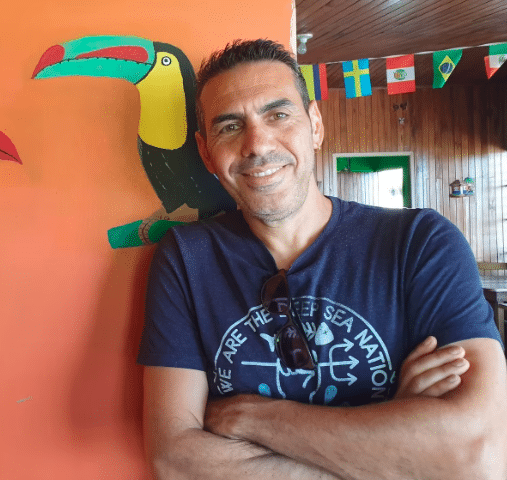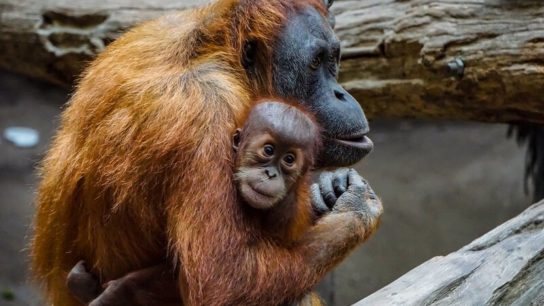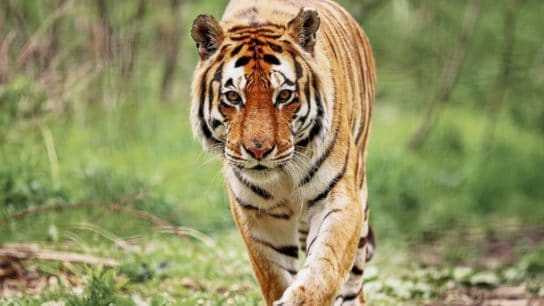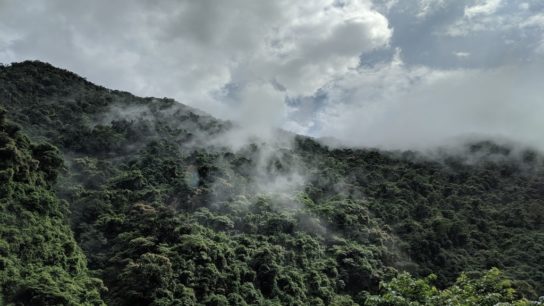June 21 is World Giraffe Day, a special day dedicated to celebrating and raising awareness for giraffes. These gentle giants, with their towering presence and graceful gait, are a symbol of the African savannah. World Giraffe Day not only highlights their unique beauty but also underscores the urgent need for conservation efforts to protect them.
—
While most people might picture a single type of giraffe, there are actually four distinct species, each with unique characteristics and conservation challenges.
The reticulated giraffe, easily recognized by its intricate network of brown markings on a chestnut background, occupies savannas and woodlands in East and Southern Africa. Once abundant, their population has plummeted by a staggering 70% since the 1990s. Habitat loss due to human expansion and illegal hunting for meat are the primary culprits. While classified as “Endangered” by the International Union for the Conservation of Nature (IUCN), a glimmer of hope remains for their future.
The Masai giraffe, the largest subspecies, dominates the savannas of Kenya and Tanzania. Identified by their rich, reddish-brown blotches against a lighter background, they boast the most complex social structures among all giraffes. However, mirroring the plight of the reticulated giraffe, they are also classified as “Endangered” by the IUCN, facing similar threats from habitat loss and hunting.

The northern giraffe paints a bleaker picture. These giraffes, found in the arid regions of West and Central Africa, are the rarest subspecies. Distinguishable by their lighter coat with larger, squarish markings, their population has suffered the most dramatic decline, dropping over 90% in the past three decades. This alarming statistic has led the IUCN to classify them as “Critically Endangered.”
The southern giraffe, the second-largest subspecies, inhabits South Africa, Namibia, Botswana, Zimbabwe, and Mozambique. Their trademark is a star-shaped pattern on their coat, particularly prominent on their legs. While the southern giraffe boasts the largest population, habitat loss and fragmentation remains a significant threat.
Beyond their distinct markings, all giraffes share a remarkable set of adaptations. Their extraordinary necks, a result of elongated vertebrae rather than extra bones, allow them to reach leaves unavailable to other herbivores. Their powerful hearts act like pumps, defying gravity to deliver oxygen to their brains. Their prehensile tongues, stretching up to 46 cm (18 inches), are perfectly designed for snatching leaves. Despite their size, they can surprise with bursts of speed, reaching up to 56km/h (35 mph) in short sprints.
Threats and Conservation Efforts
Giraffes are under threat from a variety of human activities. Habitat destruction due to agriculture, deforestation, and infrastructure development significantly reduces their living spaces. Poaching for bushmeat and traditional medicine also poses a severe threat, especially in areas with weak law enforcement.
Climate change further complicates their survival, affecting the availability of food and water. Giraffes rely on specific trees and shrubs for their diet, and changes in weather patterns can disrupt their feeding and migration habits.
Conservation programs are crucial for the survival of giraffes. Organizations like the Giraffe Conservation Foundation (GCF) work hard to protect these animals through research, habitat restoration, and anti-poaching measures. These programs often involve local communities, promoting sustainable land-use practices and raising awareness about the importance of giraffes in their ecosystems.

One of the successful strategies has been the creation of giraffe conservation areas and translocation projects. These initiatives move giraffes from high-risk areas to safer, protected regions, helping to stabilize certain populations and reintroduce giraffes to places where they had disappeared.
A Personal Call to Action
Without continued conservation efforts, giraffes may face an uncertain future. We can all contribute by supporting organizations dedicated to their protection, advocating for stronger wildlife laws, and promoting sustainable practices that reduce habitat destruction.
This World Giraffe Day, let’s stand tall for giraffes, just as they do in the wild. By raising our voices and taking action, we can ensure that future generations will have the chance to see these gentle giants roaming freely across Africa’s landscapes. Together, we can make a difference and help giraffes continue to thrive.
Featured image: Wikimedia Commons
How can I contribute to a more sustainable planet?
- 🗳️ Vote for Climate Action: Exercise your democratic rights by supporting candidates and policies that prioritize climate change mitigation and environmental protection. Stay informed with Earth.Org’s election coverage.
- 👣 Reduce Your Carbon Footprint: Make conscious choices to reduce your carbon footprint. Opt for renewable energy sources, conserve energy at home, use public transportation or carpool, and embrace sustainable practices like recycling and composting.
- 💰 Support Environmental Organizations: Join forces with organizations like Earth.Org and its NGO partners, dedicated to educating the public on environmental issues and solutions, supporting conservation efforts, holding those responsible accountable, and advocating for effective environmental solutions. Your support can amplify their efforts and drive positive change.
- 🌱 Embrace Sustainable Habits: Make sustainable choices in your everyday life. Reduce single-use plastics, choose eco-friendly products, prioritize a plant-based diet and reduce meat consumption, and opt for sustainable fashion and transportation. Small changes can have a big impact.
- 💬 Be Vocal, Engage and Educate Others: Spread awareness about the climate crisis and the importance of environmental stewardship. Engage in conversations, share information, and inspire others to take action. Together, we can create a global movement for a sustainable future.
- 🪧 Stand with Climate Activists: Show your support for activists on the frontlines of climate action. Attend peaceful protests, rallies, and marches, or join online campaigns to raise awareness and demand policy changes. By amplifying their voices, you contribute to building a stronger movement for climate justice and a sustainable future.
For more actionable steps, visit our ‘What Can I do?‘ page.
This story is funded by readers like you
Our non-profit newsroom provides climate coverage free of charge and advertising. Your one-off or monthly donations play a crucial role in supporting our operations, expanding our reach, and maintaining our editorial independence.
About EO | Mission Statement | Impact & Reach | Write for us














